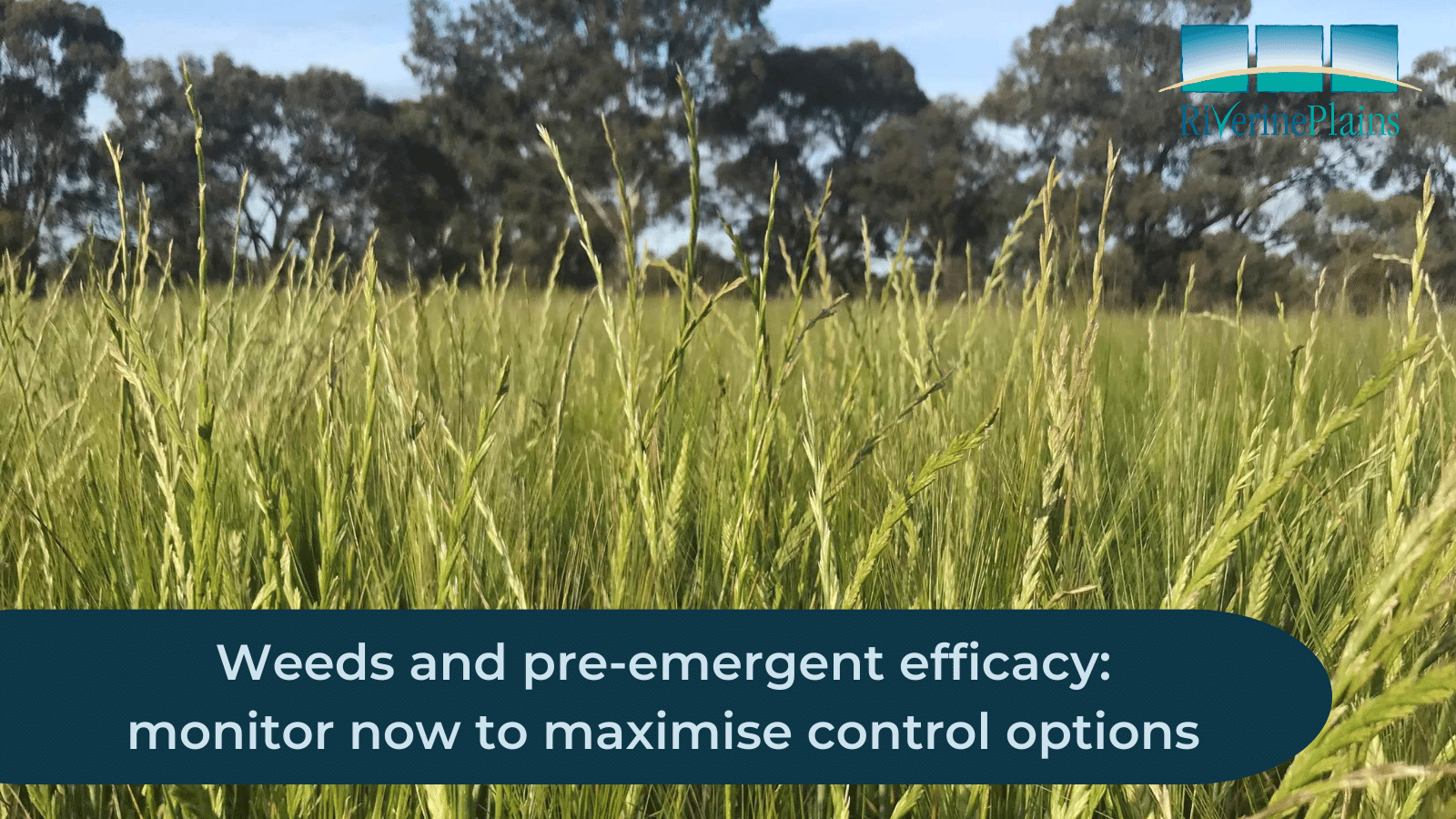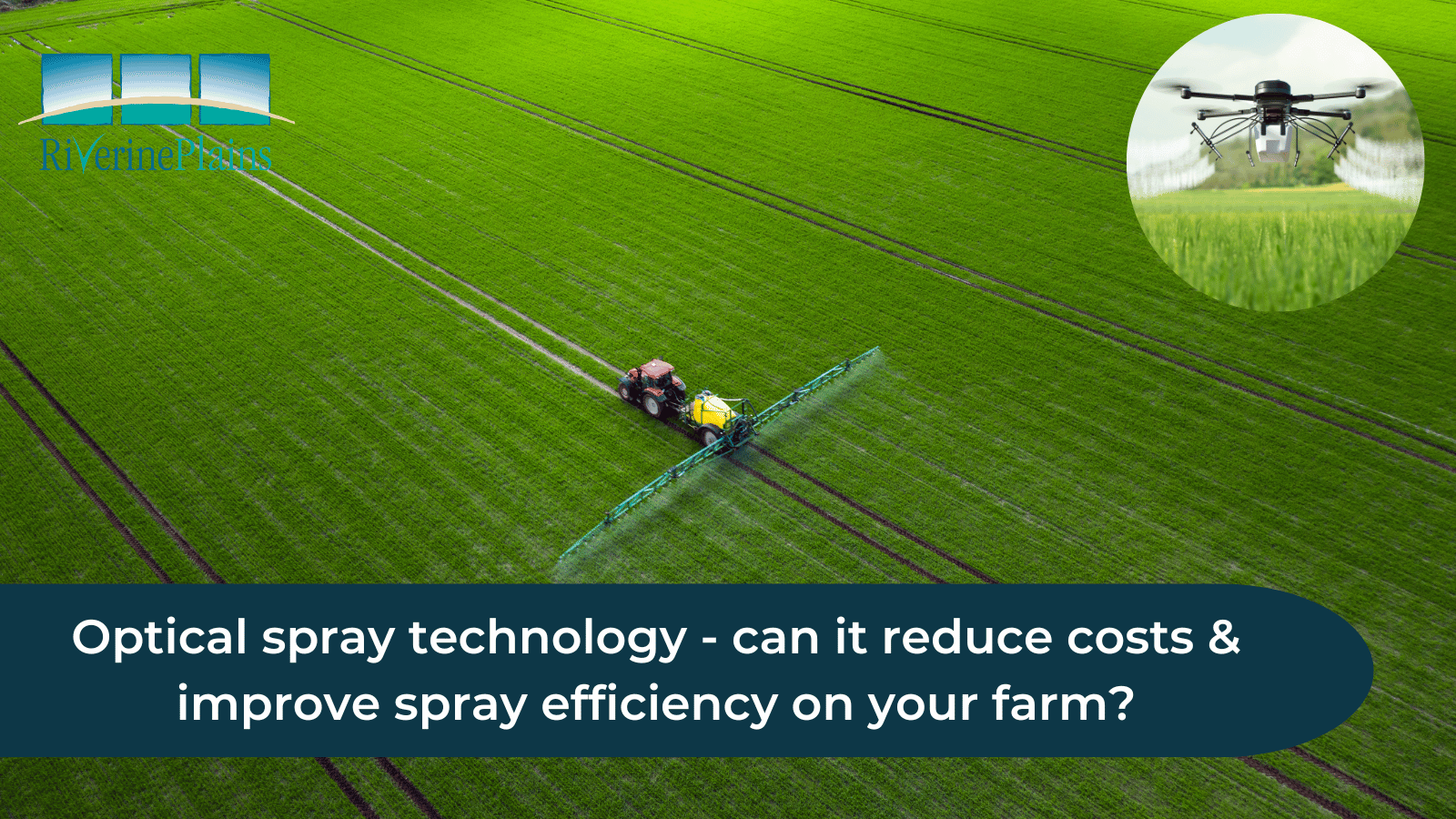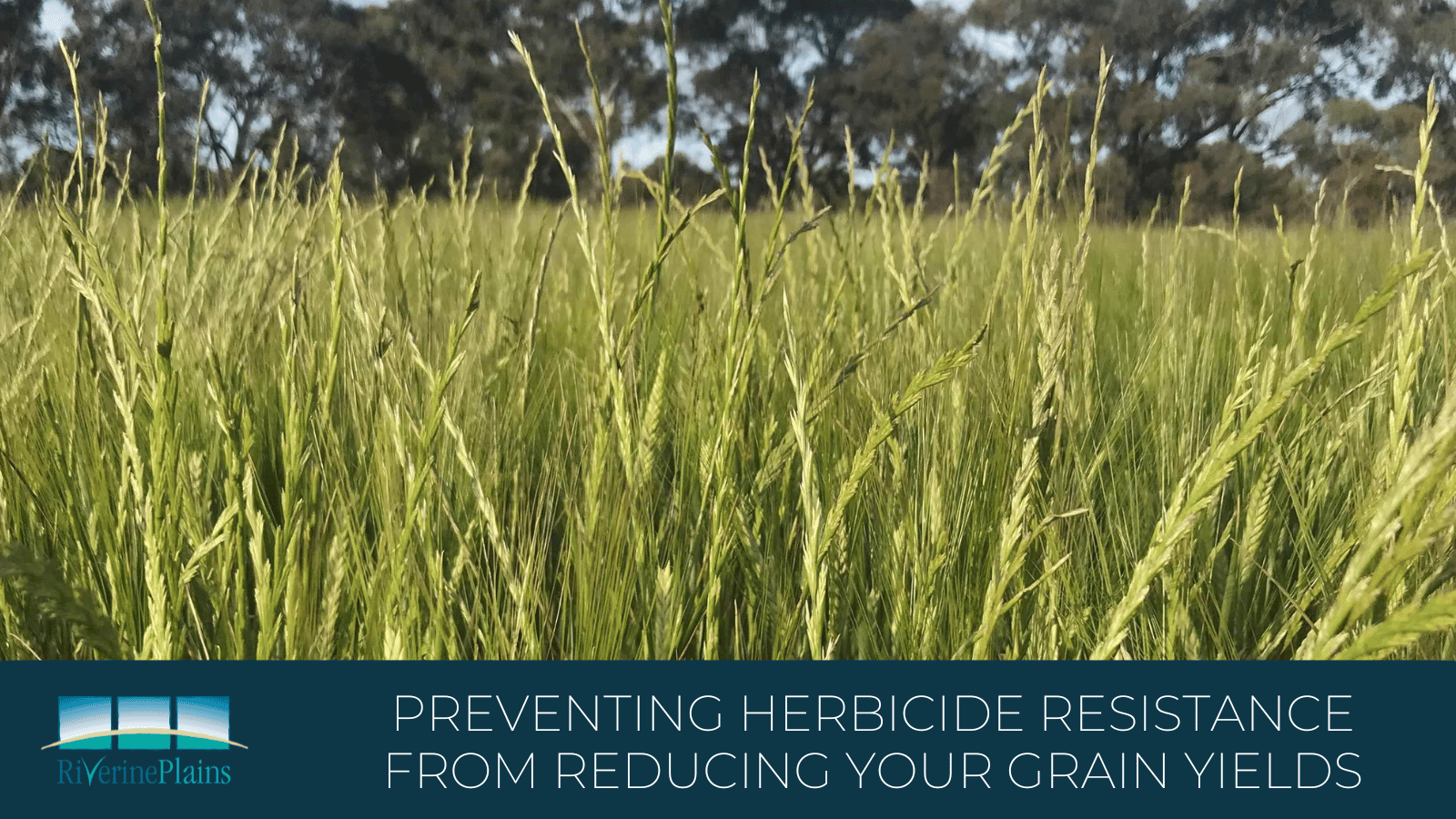Weeds and pre-emergent efficacy: monitor now to maximise control options

Key messages:
- check the efficacy of your pre-emergent herbicide applications – poor results may mean you need to reconsider your post-emergent spray program or other control options
- overall herbicide efficacy can be affected by a range of factors including plant stress, moisture and inadequate coverage
- delays or failures in weed control can be costly, so monitor now to manage the risk
Many Riverine Plains growers are still busy finishing their sowing programs, while also managing time-sensitive issues like slugs. Despite time constraints, it’s important to prioritise weed monitoring, including the effectiveness of pre-emergent herbicide applications, especially in earlier sown crops.
Poor pre-emergent weed control can have lasting consequences, especially where the pre-sowing weed burden is already high. Understanding the distribution and population of weeds across your system will help plan an appropriate in-crop herbicide program or alternative option to reduce the weed seed bank.
Causes of poor efficacy in pre-emergents
Pre-emergent herbicides work by creating a band of treated soil around weed seeds to reduce germination, but achieving a good result isn’t always easy. There are differences between products in their ability to bind to soil or organic matter, their solubility, their degradation and volatilisation, which can combine with environmental factors to reduce overall efficacy.
Stubble and other vegetation can also intercept herbicide before it reaches the soil. This can be a problem when using products like trifluralin because it remains tightly bound to stubble or organic matter, despite follow-up rainfall. In contrast, products that are more loosely bound and can be washed off stubble by rainfall into the soil.
Many pre-emergents work via root uptake, but for this to occur the herbicide needs to be available in the soil moisture. Dry soil reduces the amount of herbicide present in the soil water and explains why many pre-emergents may not provide good control in dry conditions (the herbicide also might not reach deeper weed seeds before they germinate). Herbicides with low solubility (i.e. trifluralin, Sakura®) usually need very good soil moisture after application, while herbicides with high solubility are relatively easy to incorporate with limited rainfall. Highly soluble pre-emergents tend to move with soil moisture and excessive rainfall can wash herbicide below the germination zone of the weeds or damage the germinating crop.
Herbicide persistence is another factor in poor efficacy, as it affects the length of residual control. Frequently using the same pre-emergent herbicide can result in the build-up of microbes that degrade a particular herbicide, lowering efficacy compared to when the herbicide was first used.
My pre-emergent control hasn’t been great, what now?
Pre-emergent herbicides are most effective when used to provide early weed control in competitive crops, which can suppress weed growth and seed set. Where weed numbers are already high, or pre-emergent control has been poor, other options might need to be explored.
In-crop control
There is a lot of choice when it comes to herbicide options, so consult your agronomist or advisor for advice on which product is right for you.
Always follow your agronomist’s rate recommendation (or the recommended label rate if you don’t have an agronomist). Cutting rates to save money reduces effectiveness and hastens the development of resistant weed populations, which then become more costly and difficult to control.
Good efficacy also depends on using appropriate nozzle selection and operating pressure for the conditions. Good water rates, the use of adjuvants and sound application techniques should provide good herbicide coverage on the weeds. It’s also critical that both weeds and the crop to be treated are at the recommended growth stage and that plants aren’t stressed. A lack of moisture, frost, waterlogging or pests and diseases can reduce herbicide uptake, resulting in poor control.
Other options
Good agronomic practices play a vital role in stopping weed seed set and can also help extend the life of herbicides. Where weed burdens are high, rotating crops and pastures can provide greater opportunity for chemical control. Rotating herbicide modes of action will also reduce the risk of herbicide resistance developing.
Growers can also consider crop topping or spray topping weedy crops and pastures, or green or brown manuring later in the season to reduce weed seed set. Making hay, or harvest weed seed control options can also help reduce the weed seed bank.
Summary
Pre-emergent and in-crop herbicide efficacy should be monitored throughout the growing season to identify weed control failures or escapes. Early identification of uncontrolled weeds allows farmers to plan alternative control measures and provides greater flexibility later in the season.
Resources and further reading
Clean borders evolving resistance on the fenceline
Spray well correct nozzles, adjuvants and water rates
Never cut the herbicide application rate
Early identification allows more effective weed control
Get the best results using pre-emergent herbicides


